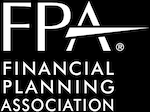I’m sure you’ve noticed how college tuition and other education-related expenses are rapidly on the rise. Unfortunately, that trend isn’t going anywhere soon.
With that in mind, more people are searching for innovative ways to save for this important, but pricey venture for their children and grandchildren. One such alternative method is to utilize a Roth IRA investment account in lieu of other traditional college savings avenues, such as 529 plans. It may sound like a strange suggestion at first…why would you use a retirement account to save for education expenses when there are other accounts specifically designed for that purpose?
Below I will outline three ways this method may make much more sense for your bank account and your peace of mind.
1. Roth IRAs Could Offer the Same Tax-Free Distributions as 529 Plans
The main reason people contribute to a 529 plan is to benefit from tax-free distributions for educational purposes. What many may not realize, however, is that a Roth IRA can offer the exact same option.
The rules are as follows: If you are over age 59 1/2 at the time you take distributions from a Roth IRA and have had the account for five or more years, you will receive those distributions 100% tax and penalty free. There are also no restrictions for whether you use those funds for education-related expenses or other purposes.
Even if you haven’t reached age 59 1/2 or had your Roth IRA account for five years at the time you need distributions to cover education expenses, you may still be eligible to access those funds tax and penalty free. For example, anything you’ve contributed to your Roth IRA can be distributed at any age, and at any time without taxes or penalties.
For example, if you’ve contributed a total of $50,000 over the last 10 years to your Roth IRA account, at the very least, you would be able to take that amount tax free for education costs.
Funds you have converted to a Roth IRA may also be able to be distributed tax and penalty-free while you’re younger than 59 1/2, as long as you completed the conversion five or more years ago. And, if you’re over 59 1/2, any gains you earned on your conversion while it was in your Roth IRA can also come out tax and penalty free.
2. Roth IRAs Are More Flexible
As I previously stated, the biggest advantage of a 529 plan is the ability to access your contributions to that account, as well as the growth it experiences, 100% tax free. For instance, if you contribute $10,000 to a 529 plan and it grows to $30,000 by the time your child attends college, the full $30,000 can be distributed without penalty, as long as it’s used for qualifying educational expenses.
While the 529 plan offers a huge benefit tax-wise, there’s also a pricey downside to having that type of account if you can’t use the funds for qualifying expenses. For example, what if your child chooses not to attend college or gets a scholarship and doesn’t need the funds in your 529 account? In order to access that money for purposes other than education, you’ll be required to pay a hefty income tax on any gains, as well having your distributions assessed at a 10% penalty.
As we learned from the first point, if you had saved funds in a Roth IRA instead and no longer needed them for education purposes, you could simply use the account for your retirement expenses with no penalties.
3. Roth IRAs Aren’t Listed as Assets on the FAFSA Form
As most college-bound students know, a Free Application for Federal Student Aid is an essential document to complete in order to receive educational assistance.
After answering more than 100 questions on the FAFSA form, the expected family contribution is calculated. This is essentially the amount the government believes a person should pay for their education and is partially determined by the amount of assets owned by the applicant’s family.
The 529 plan is one of the assets that’s required to be reported in the FAFSA application, and can in turn reduce the amount of financial aid for which your child can qualify. A Roth IRA, on the other hand, is not an asset used to determine a family’s expected family contribution since it is considered a retirement account. There are no limits to a Roth account either, so you may be able to build up considerable amounts in your IRA and you child could still be eligible for student assistance.
Take Away: As evidenced by the above three concepts, there are quite a few reasons to consider a Roth IRA as a viable savings account for your child or grandchild’s education. Even still, everybody’s situation is different and you should always evaluate all of your options and check with a financial professional to help determine what’s best for you and your family.






